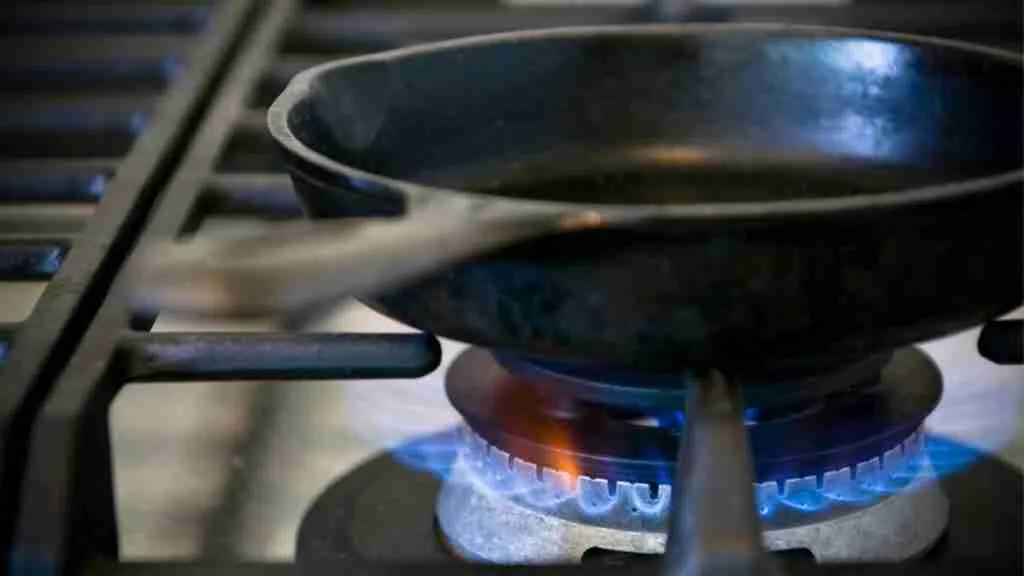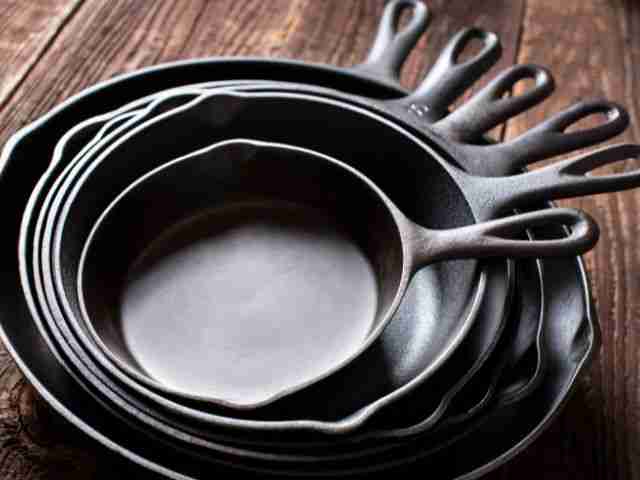When seasoning a

As we discuss later, several other reasons support this belief about Crisco. But before we do, let’s look at a few common oils used. Here are some of our other favorite things.
Table of Contents
Lard and Bacon Grease
Let’s start with lard. Lard is an animal fat, often made from pork. Many old-timers swear by it for seasoning. But then there’s also Bacon Grease, the tasty residue you get after frying bacon. The primary difference? Lard is unflavored, while bacon
Coconut Oil
You might have heard of Coconut Oil as an option. It’s good, but it gives a distinct coconut flavor. Its smoke point is around 350 degrees.
Olive Oil: Not for Seasoning
While Extra Virgin Olive Oil is excellent for cooking, it’s not the best choice for seasoning due to its strong flavor and lower smoke point of 375 degrees.
Vegetable Oil
Companies like Lodge, a prominent
Other Notable Oils
Grapeseed Oil: Extracted from wine grape seeds, its smoke point is around 400 to 420 degrees.
Canola Oil
Another good choice with a smoke point of around 425 degrees.
Butter
It is delicious for cooking but not ideal for seasoning unless you turn it into ghee. Its low smoke point makes it less durable for seasoning purposes.
Avocado Oil
High smoke point of 520 degrees but has a slight flavor.
The Flaxseed Oil Controversy
Lastly, there’s Flaxseed Oil. Some love it, but there are better options. A few reasons why it’s not an option for me are it’s pricey, and its low smoke point of 225 degrees can cause the seasoning to flake off if overheated. While it can make a skillet look good in the short term, it lacks durability, and the cost is not worth it.
Crisco and Vegetable Shortening
Now, let’s talk about Crisco. It’s a vegetable shortening, different from animal fats like lard. Many people praise it for seasoning. The smoke point of Crisco vegetable oil is said to be around 490 degrees, making it an excellent choice.
Crisco and Vegetable Shortening: The Perfect Match for Seasoning Cast Iron
Seasoning a
Understanding Crisco
Crisco is a household name, synonymous with vegetable shortening. Unlike lard or butter, derived from animal sources, Crisco consists of vegetable oils such as soybean, palm, and cottonseed. This plant-based makeup provides a vegetarian alternative for seasoning
Seasoning Cast Iron With Crisco
In my opinion, and the opinion of many cast iron users and collectors who will say from experience, it is one of the better-cast iron seasoning options.
Crisco Smoke Point:
- A high smoke point refers to the temperature at which an oil or fat starts to smoke and break down. The smoke point of Crisco shortening is 490 degrees Fahrenheit. Crisco can endure the high temperatures necessary for seasoning without deteriorating too quickly.
- Uniform Layer Formation:
- Crisco’s consistency ensures it spreads smoothly across the cast iron’s surface. This even spread is crucial for that desired non-stick finish on skillets and pans.
- Durability:
- When applied correctly, a cast iron seasoned with Crisco can serve faithfully for years, potentially even generations. It offers a formidable barrier against rust and wear, showcasing its protective qualities.
- Neutral Flavor:
- Some oils or fats can leave a distinct taste on the skillet, affecting the flavor of dishes. Crisco’s vegetable-based composition ensures a neutral flavor, allowing the genuine taste of your culinary creations to shine.
FAQ
Does Crisco have a high smoke point?
Yes, Crisco has a high smoke point. The smoke point of Crisco is around 490 degrees, making it suitable for various cooking and seasoning purposes.
Is Crisco good for seasoning cast iron?
Absolutely! Crisco is frequently recommended for seasoning cast iron due to its high smoke point and ability to create a durable, non-stick layer on the skillet.
At What temperature does Crisco polymerize?
When heated, oils undergo polymerization to form a protective, non-stick layer on cast iron. Given its high smoke point of 490 degrees, Crisco polymerizes at a slightly lower temperature, usually around 450 to 475 degrees. It’s essential to keep the cast iron within this range during seasoning to ensure optimal polymerization without excessive oil smoking.
In Conclusion:
When seasoning your
For more questions and answers, check out our frequently asked questions page for more practical tips and tricks.




I have an old cast iron skillet that has an inconsistent grey marks in the black skillet. They are a different feel than the black causing a bumpy feel. Is this ok or does it need to be removed?